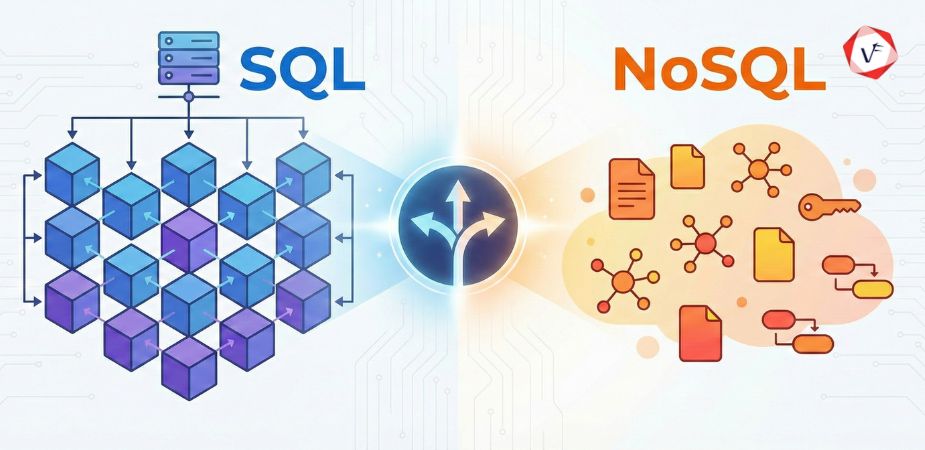- December 18, 2023 6:01 am
- by Sooraj
- December 18, 2023 6:01 am
- by Sooraj

A software development methodology refers to a systematic strategy used by software development teams to smartly plan, execute, and handle the entire software development process.
The top 10 software development approaches that assist businesses in navigating the complexity of methods for developing software will be thoroughly examined in this blog.
What Is a Software Development Methodology?
A software methodology is a systematic approach used to plan, structure, and control the process of developing a software product. It encompasses a set of practices, principles, and guidelines that guide the software development life cycle from conception to deployment. The methodology dictates how tasks are organized, roles are assigned, and how resources are allocated throughout the development process.
1. Agile Methodology
Agile differentiates from other software development approaches as the strategy that prioritizes cooperation, adaptation, and customer happiness while being the most versatile and effective. Agile divides work into multiple time periods or sprints. Each sprint lasts a few weeks, during which time team members work to complete a set of objectives. The most popular way of developing software is agile.
Pros
Cons
2. Waterfall Methodology
The waterfall methodology is a good fit for works with a clear scope and schedule. It is a suitable choice for businesses that value reliability and authority over adaptation and flexibility. Before moving on to the following stage, each step must be finished completely. Therefore, no requirements-related reversible changes may be made to the waterfall development. The waterfall methodology is losing popularity in today's quickly changing and competitive business climate because of its low adaptability, which has grown much more significant.
Pros
Cons
3. DevOps Methodology
DevOps development process, which has become extremely common in the past few years, when related to other present possibilities. The DevOps implementation puts a strong emphasis on administrative improvements, which strengthens cooperation between the departments in charge of different stages of the development life cycle, including development, quality control, and maintenance.
Pros
Cons
4. Test-Driven Development Methodology
In a test-driven development (TDD) methodology, test cases are written to define and verify the expected behavior of code. The process initiates test-driven development by planning and creating tests for every small aspect of your application's behavior. The level of excellence of the software project does increase with time, despite the fact that this process first seems slow and frequently is in the immediate future.
Pros
Cons
5. Feature-Driven Development Methodology
Another outdated paradigm that emphasizes providing functionality effectively and progressively is feature-driven development (FDD). This methodology places a strong emphasis on feature-centric development, domain modeling, and collaboration. Although it is not as well-known today as certain other methodologies, it serves as the basis for the majority of common development methodologies, including Agile and Scrum. Out of the five phases of FDD, the first is the creation of a whole structure. Then make a list of the attributes, and plan them all accordingly. The two last steps, prepare by function and develop by function, will take up the majority of the time.
Pros
Cons
Scrum Methodology
It is an agile software development methodology. It can be used on virtually all platforms. The Scrum principle is to deliver value over a short period of time, consisting of relatively rapid incremental steps called "sequential iterations." The Scrum method is appropriate for tasks that involve the input of customers and specifications that are difficult to describe. The Scrum method is appropriate for tasks that involve the input of customers and specifications that are difficult to describe. Software development firms could accelerate the development of applications by implementing this approach which would make a series of prototypes in one go.
Pros
Cons
7. Extreme Programming Methodology
Another agile methodology that focuses on developing advanced quality applications using best software development practices in software development is extreme programming (XP). XP's flexibility can lead to increased realm if requirements are not managed effectively. If not managed properly, there is a risk that the scope will extend beyond the original plan, impacting project schedules and resources.
Pros
Cons
8. Lean Development Methodology
The lean model emphasizes the development of effortlessly manageable operations as a technological progression. This exquisitely drafted strategy of development is more purposefully integrated than any other form of light methodology.
Pros
Cons
Prototype Methodology
The Prototype approach is the stage of product development that necessitates developers to solely construct the prototype of the application merchandise to demonstrate its characteristics to consumers. They imagine how it will operate and exhibit its intent to investors or customers.
Pros
Cons
10. Spiral Methodology
The spiral model is the fusion of Agile and waterfall methodology that primarily emphasizes early risk identification and alleviation. It adheres to a risk-oriented approach where the development process is structured into a sequence of spirals, each signifying a comprehensive iteration. The idea behind the spiral methodology is to tackle risk at the outset of the project lifecycle.
Pros
Cons
Choosing the right software engineering methodology is pivotal for project success. Begin by understanding your project's size, flexibility needs, and criticality. Consider timelines, team size, and expertise, as well as client collaboration and risk tolerance. Factor in budget constraints and compliance requirements. Learn from past experiences and be open to hybrid approaches if necessary. Continuous improvement is key, ensuring the chosen methodology aligns with project goals throughout its lifecycle. Careful consideration of these factors will guide you toward the methodology that best suits your project's unique requirements and constraints.
Additionally, it's crucial to involve key stakeholders early in the decision-making process to gather insights and expectations. Collaborative discussions with team members, clients, and other relevant parties can provide valuable perspectives that may influence the choice of a methodology. Effective communication and alignment of expectations will foster a shared understanding of the development approach, enhancing the likelihood of successful project outcomes. By incorporating diverse viewpoints, you ensure that the chosen methodology not only fits technical requirements but also aligns with the broader goals and vision of the project.
As the landscape of software development keeps changing, it is crucial for organizations to select the appropriate approach in order to successfully deliver software projects.
The ten methods mentioned in this article provide a variety of choices, each with its own distinct advantages and benefits. By thoroughly assessing project requirements, team dynamics, and organizational culture, organizations can make well-informed decisions and choose the method that best suits their particular needs.
Hence, prior to selecting any of these development techniques for your software development projects, it is important to familiarize yourself with all these methodologies. However, it is highly recommended to reach out to one of the leading software development firms for enhanced outcomes.
Guaranteed Response within One Business Day!

What is Digital Twin Technology?

What are WebAssembly (WASM) Applications?
Code Review Best Practices: Complete Guide for 2026

Database Selection Guide: SQL vs NoSQL
AI Agents in Enterprise Software: How Autonomous AI is Transforming Business Operations